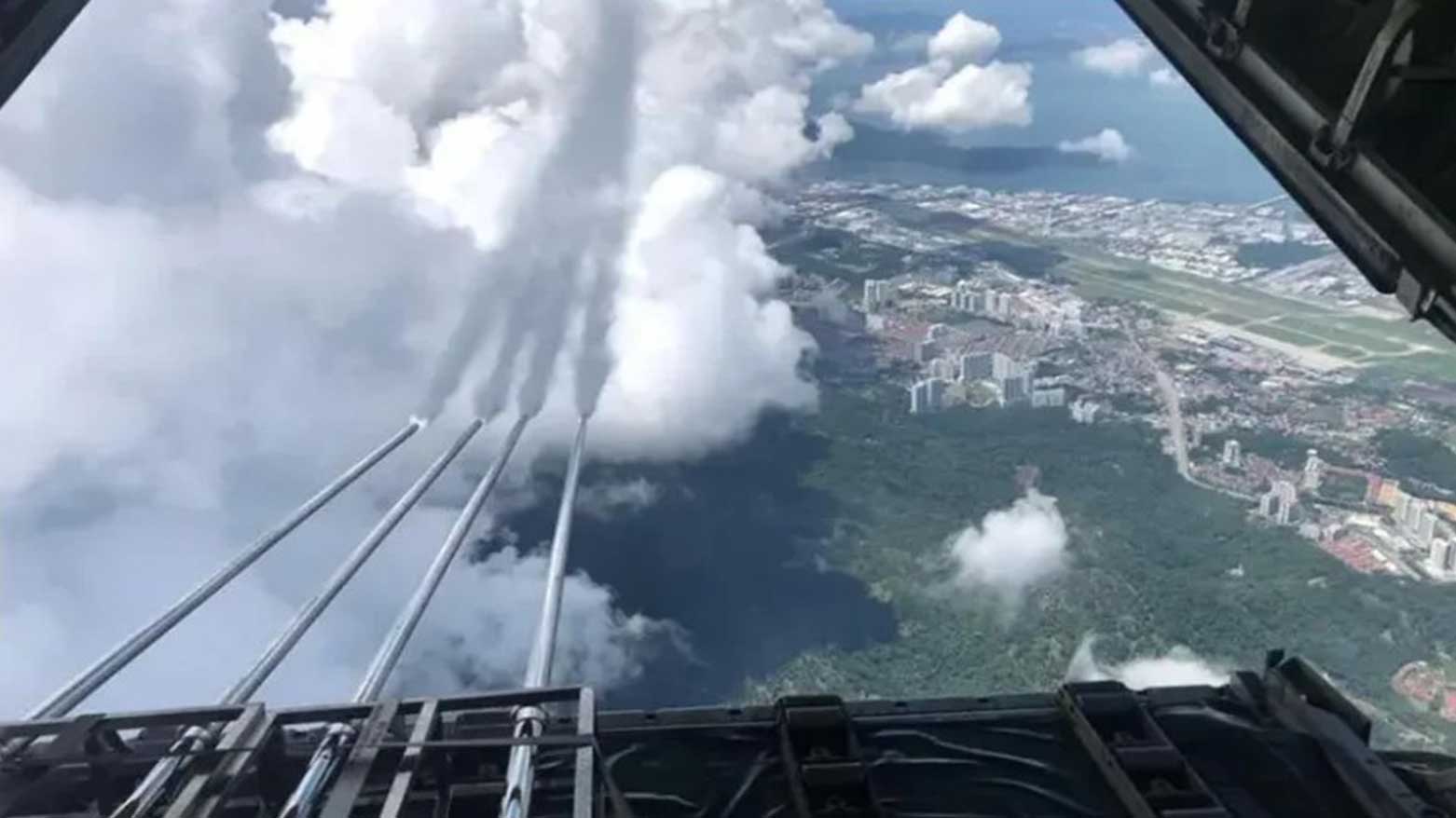Iran Launches Emergency Cloud Seeding as Historic Drought Pushes Tehran Toward Water Cuts and Evacuation Fears
With rainfall at its lowest in a century and reservoirs nearing depletion, officials warn that Iran’s deepening water crisis threatens both domestic stability and regional influence.

ERBIL (Kurdistan24) — Iran is confronting its most severe drought in decades, prompting authorities to launch emergency cloud-seeding operations and prepare for unprecedented water rationing in Tehran and other major cities. Officials warn that without substantial rainfall before winter, the capital itself could face partial evacuation — a scenario that underscores the gravity of the deepening environmental crisis.
State media reported that the first cloud-seeding flight of the current water year was conducted over the Urmia Lake basin in Iran’s northwest on Saturday. Lake Urmia, once the Middle East’s largest saltwater lake, has shrunk dramatically in recent years, leaving behind a vast salt plain due to prolonged drought and mismanagement.
According to IRNA, further cloud-seeding missions are planned for East and West Azerbaijan provinces. The practice involves dispersing particles such as silver iodide or salt into clouds to stimulate rainfall — a technique also used by the United Arab Emirates and other states in the region.
Videos aired by local outlets on Sunday showed heavy rain and limited flooding in some western and northwestern regions, though it remains unclear whether the cloud-seeding operations were responsible.
IRNA reported rainfall in Ilam, Kermanshah, Kurdistan, Lorestan, and West Azerbaijan, even as the country’s meteorological organization warned that precipitation has fallen 89 percent below long-term averages.
“We are currently experiencing the driest autumn the country has experienced in 50 years,” the agency said.
The drought’s effects are most visible in Tehran, where rainfall levels have collapsed to their lowest point in a century. Snow appeared for the first time this year on the Tochal mountain near the capital, but it brought no significant relief.
Half of Iran’s provinces have gone months without a single drop of rain, and reservoirs supplying the capital are nearing exhaustion.
In an alarming public address earlier this month, President Masoud Pezeshkian cautioned that Tehran might have to be “evacuated” if no meaningful precipitation arrives. He gave no details about how a city of more than 10 million people could be moved, but officials have already confirmed that periodic water cuts in the capital are imminent.
“This will help avoid waste even though it may cause inconvenience,” Energy Minister Abbas Ali Abadi said on state television, noting that some neighborhoods have begun experiencing overnight shortages.
Tehran’s crisis is compounded by the rapid depletion of the city’s main water sources. The Amir Kabir Dam — one of five major reservoirs serving the capital — contains just 14 million cubic meters of water, down from 86 million at the same time last year. With daily consumption at approximately three million cubic meters, reserves could run dry within two weeks if no new rainfall arrives.
Similar emergency measures are being considered in Isfahan, Tabriz, and Mashhad, where nighttime water cuts are under review.
Experts warn that the drought — intensified by climate change — has been worsened by years of poor planning. Excessive dam construction, inefficient agriculture, and a failure to modernize water management systems have contributed to what environmental analysts describe as a “manmade disaster.” Iran’s long-term water stress, they argue, has now reached a breaking point.
The environmental emergency comes amid an already fragile economic landscape. Iran’s sanctions-stricken economy — weakened by U.S., EU, and UN restrictions targeting its nuclear program and regional activities — is ill-equipped to absorb further shocks.
Industries such as petrochemicals, mining, and steel production, all major water consumers, are facing potential slowdowns that could deepen unemployment and spark new rounds of social unrest. Inflation remains high, and the national currency has lost much of its value in recent years.
Beyond domestic concerns, the crisis risks reshaping Iran’s geopolitical posture. As the government reallocates resources to manage the drought and maintain internal stability, its capacity to support regional allies — including Hezbollah, the Houthis, and militias in Iraq and Gaza — may diminish.
Analysts say this could inadvertently advance the long-standing strategic goals of the United States and Israel, which have sought to curb Iran’s regional influence.
For now, Iranian officials insist that cloud seeding, water rationing, and conservation campaigns can help stabilize supplies until winter rains arrive. But environmental advocates warn that without sweeping reforms, the country is headed toward a deeper and potentially irreversible collapse of its water systems.
With reservoirs dwindling, agriculture shrinking, and urban centers edging toward crisis, Iran’s water emergency is increasingly viewed not just as an environmental disaster but as a national and geopolitical turning point — one that could reshape the country’s trajectory in an already volatile region.
